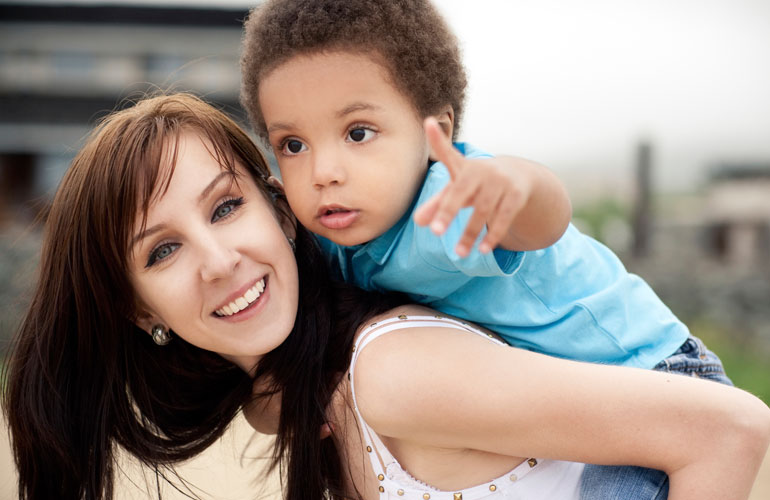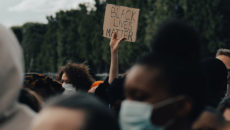You want your child to be ready for racism when he’s older, but how do you go about preparing him? Instead of waiting until your child is confused or hurt by a racist remark, begin by having conversations about physical and ethnic differences when he’s two-and-a-half or three years old. What color hair does Mommy have? What shape eyes do you have? What about our neighbor? Who has freckles? Get your child to use very specific descriptive language — “Jody has really curly hair and brown skin, and Mark has straight blond hair and green eyes.” This lets him know that it’s fun and perfectly acceptable to notice and explore differences.
You can also talk about why people look the way they do — explain that there’s a geographical connection to physical and ethnic characteristics.
Teachable Moments
Talking about race might feel awkward, but it’s how kids learn how to think about differences. I remember being with my son, who was three years old at the time, when he pointed at a man wearing a turban. “Look, mom, a genie,” he said, loudly. A perfect teachable moment — only I needed to first talk him down off the table he was standing on. You don’t want to reprimand or shush children in such situations; that sends the message that talking about differences is bad. When my son was back on the floor, I turned his comment around by affirming that he noticed the difference: “Isn’t that an interesting hat? It’s wonderful that you noticed it.” Then you can shift to an explanation: “Let’s talk about the different types of head coverings that people wear. He’s not a genie, but he wears a special hat because of his religion.”
Another time, I was with a preschool-aged client who saw a girl with dark skin and asked, “She looks dirty. Do you think she needs a bath?” Questions like this make you wince, but you can turn them around and help a child understand what he’s seeing: “Hmm, I don’t think so, but isn’t she lucky? She has such beautiful dark skin.” Of course, if it’s an awkward time to talk, you can postpone the conversation by saying, “I’m really glad you asked that, but we need to be quiet in church. We can talk about it later.”
Talking with Older Kids
Jumping right into a discussion about racism with older kids can seem uncomfortable, but there are ways to approach it. Say something like, “You know, I was talking to Sarah’s mom, and she told me that Sarah was teased about being Chinese. You and I have never really talked about the ways in which people are different. I’m sorry about that. I think it’s really important.” Admit that racial differences can be difficult to talk about and then say, “I don’t want you to feel that you wouldn’t have anyone to talk to if you experienced what Sarah did. If something like that happens, I hope that you know you can share it with me.”
After that conversation, go back to the earlier strategy of noticing differences with your child. You can be upfront about it with older kids: “You know, we haven’t explored different cultures and I feel bad about that. This is a really important part of growing our family’s understanding of these issues. On Saturday, we should go to the culture festival downtown and see what we can learn.”
Let your child know you’re being strategic — we’ve been remiss, now we’re going to go back and fix it. Talking through these steps is crucial; it will help you build a strong foundation for explaining a far more difficult topic: racism.



